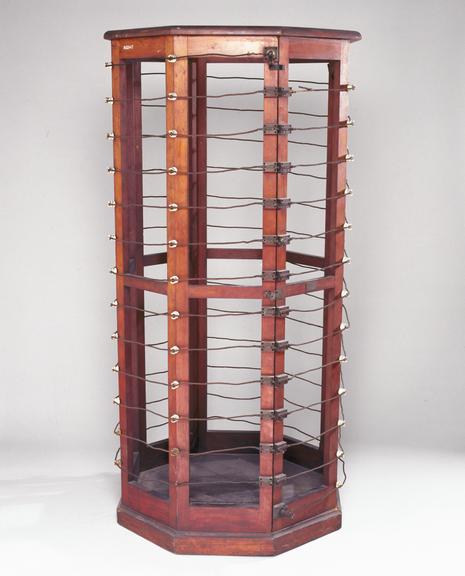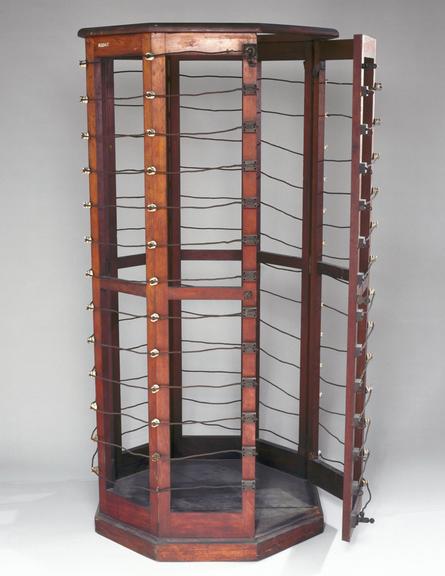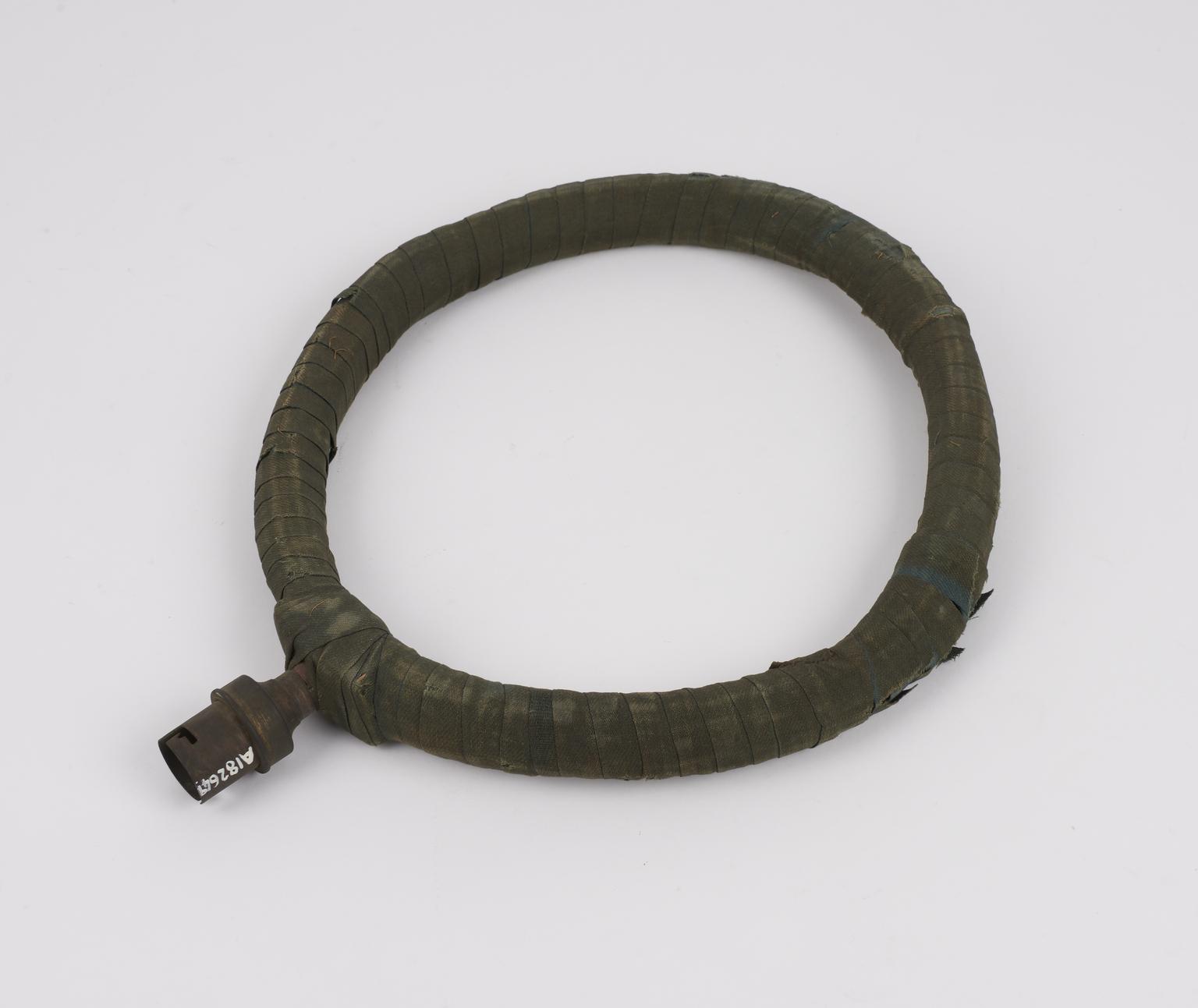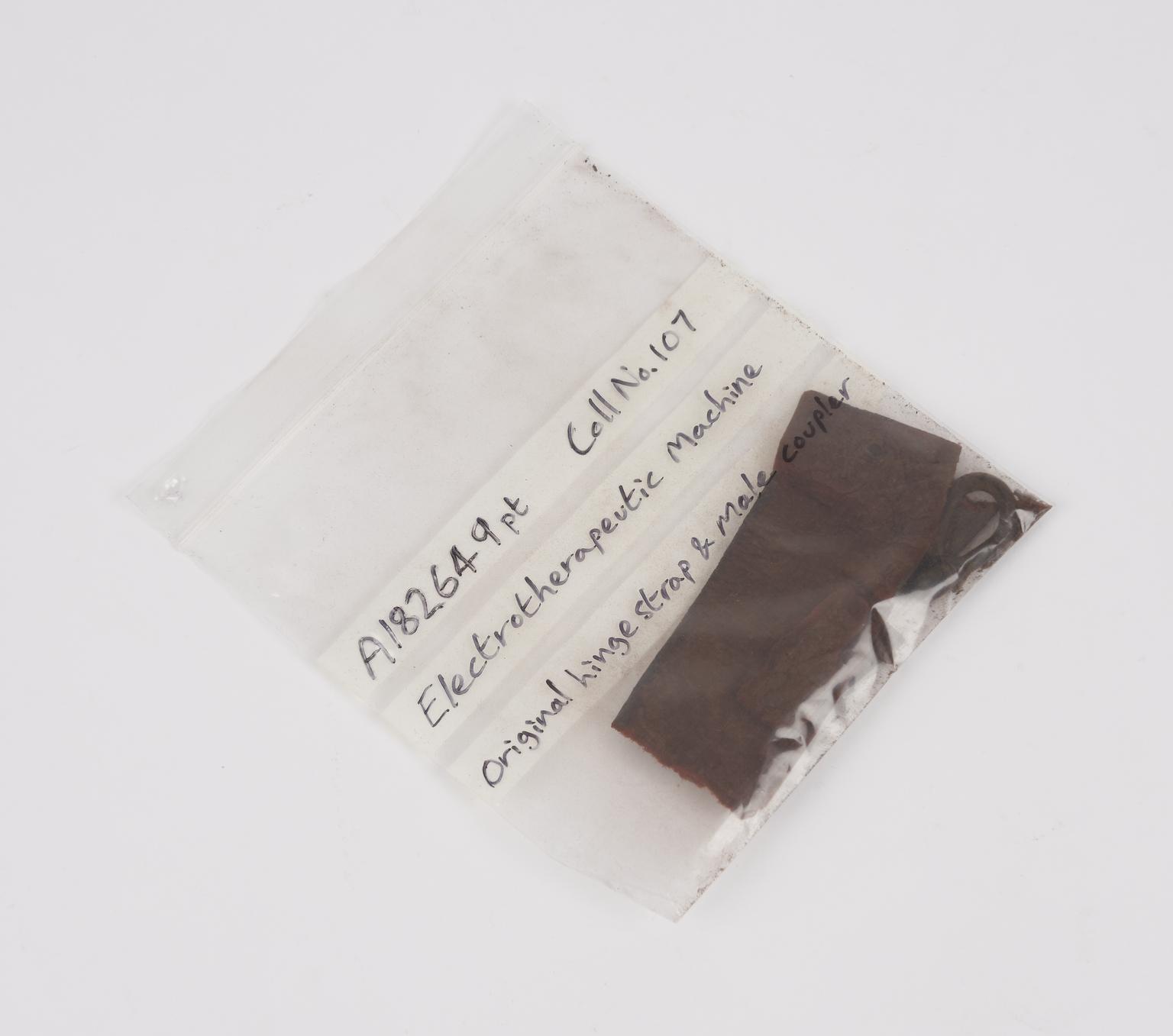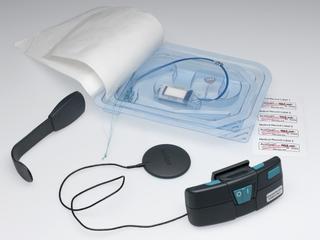D'Arsonval cage for electrotherapeutic auto-conduction
D'Arsonval cage for electrotherapeutic auto-conduction, octagonal wooden frame, by Richard Heller of Paris, 1890-1910, used by Dr J.-A. Riviere. Patient was insulated from all contact with current carrying wire, and since the wire was carrying high-frequency alternating current, the patient didn't feel a thing, except a slightly warm sensation.
More
Electrotherapeutic machine/solenoid or cage for auto conduction, octagonal wooden frame, by Richard Heller of Paris. The user is insulated from all contact with current carrying wire.
- Materials:
- frame, oak and fittings, iron
- Object Number:
- A182649/1
- Image ©
- The Board of Trustees of the Science Museum


